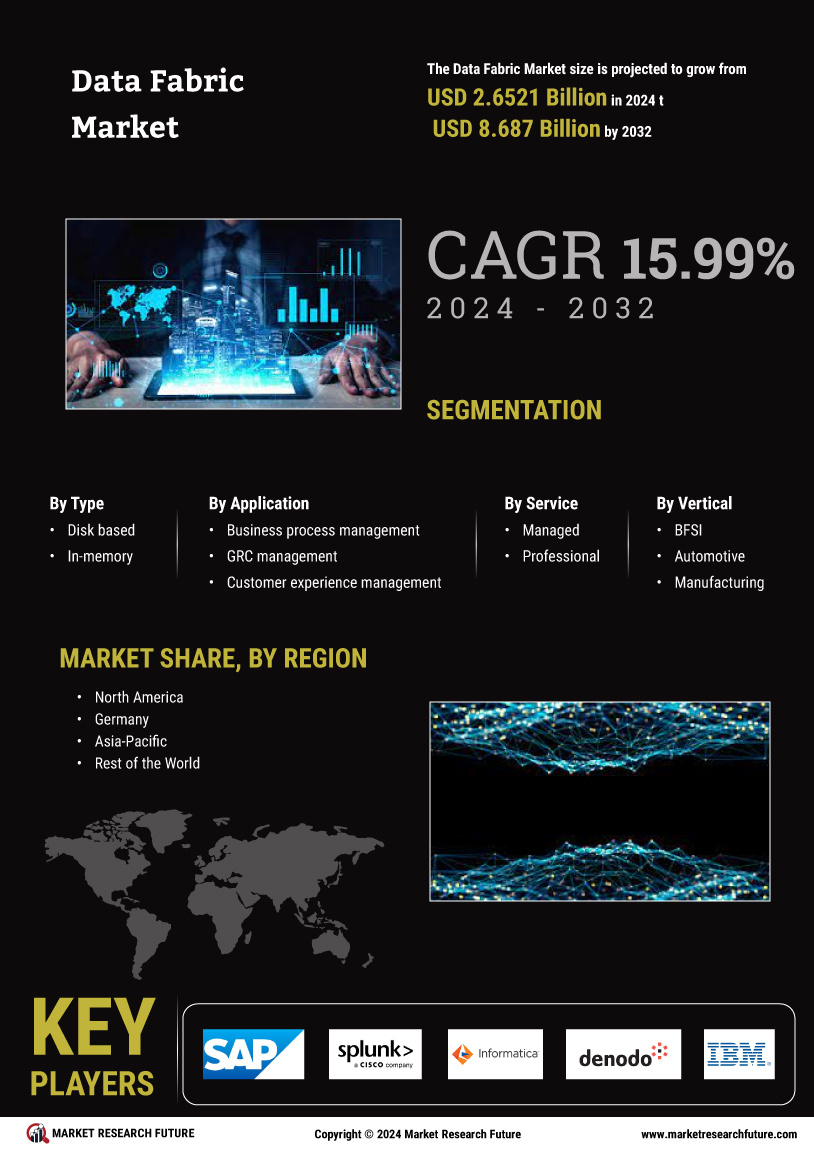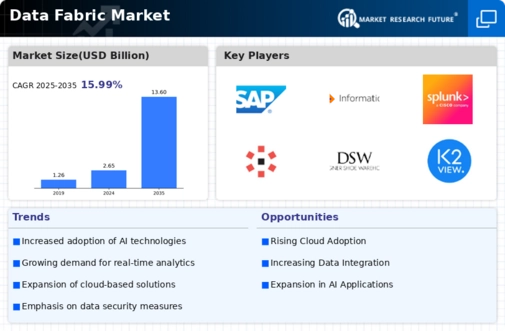Market Growth Projections
The Global Data Fabric Market Industry is poised for substantial growth, with projections indicating a rise from 2.65 USD Billion in 2024 to 13.6 USD Billion by 2035. This growth trajectory suggests a compound annual growth rate of 15.99% from 2025 to 2035. The increasing complexity of data environments and the need for efficient data management solutions are driving this expansion. Organizations are recognizing the value of data fabric architectures in streamlining operations and enhancing data accessibility. As the market evolves, it is likely to attract significant investments and innovations, further solidifying its position in the global technology landscape.
Rise of Cloud Computing Adoption
The Global Data Fabric Market Industry is significantly influenced by the rapid adoption of cloud computing technologies. As organizations migrate to cloud environments, the need for robust data management solutions becomes paramount. Data fabric architectures facilitate the integration of on-premises and cloud data, allowing businesses to operate more efficiently. This trend is expected to contribute to the market's growth, with projections indicating a rise to 13.6 USD Billion by 2035. The flexibility and scalability offered by cloud-based data fabric solutions are likely to attract more enterprises, thereby enhancing their data management capabilities.
Need for Enhanced Customer Experience
The Global Data Fabric Market Industry is significantly shaped by the need for enhanced customer experience. Organizations are striving to deliver personalized services and products, necessitating a comprehensive understanding of customer data. Data fabric solutions enable businesses to unify customer data from various sources, providing a holistic view of customer interactions. This capability is crucial for tailoring offerings and improving customer satisfaction. As companies prioritize customer-centric strategies, the demand for data fabric technologies is likely to grow, reflecting the industry's shift towards data-driven customer engagement.
Growing Demand for Real-Time Data Integration
The Global Data Fabric Market Industry experiences a surge in demand for real-time data integration solutions. Organizations increasingly require seamless access to data across various platforms and environments. This need is driven by the necessity for timely decision-making and enhanced operational efficiency. As businesses strive to leverage data for competitive advantage, the market is projected to reach 2.65 USD Billion in 2024. The ability to integrate data from disparate sources in real time is becoming a critical factor for success, suggesting that companies adopting data fabric solutions may gain a significant edge in their respective industries.
Increased Focus on Data Governance and Compliance
In the Global Data Fabric Market Industry, there is an increasing emphasis on data governance and compliance. Organizations are recognizing the importance of managing data responsibly and adhering to regulatory requirements. Data fabric solutions provide the necessary frameworks to ensure data quality, security, and compliance across various jurisdictions. This heightened focus on governance is likely to drive market growth, as companies seek to mitigate risks associated with data breaches and non-compliance. As regulations evolve, the demand for comprehensive data management solutions will likely intensify, further propelling the adoption of data fabric technologies.
Emergence of Advanced Analytics and AI Technologies
The Global Data Fabric Market Industry is witnessing a transformative shift due to the emergence of advanced analytics and artificial intelligence technologies. These innovations enable organizations to extract valuable insights from vast amounts of data, enhancing decision-making processes. Data fabric architectures support the integration of AI and analytics tools, facilitating the seamless flow of data across systems. This integration is expected to drive market growth, with a projected compound annual growth rate of 15.99% from 2025 to 2035. As businesses increasingly rely on data-driven strategies, the role of data fabric solutions in supporting these initiatives becomes increasingly vital.







